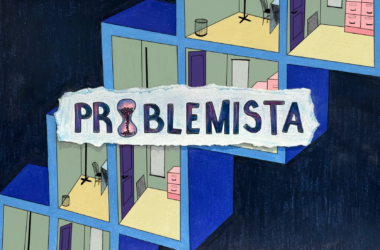There is so much more to October film-watching than scary movies. While viewers may inevitably crave the grotesque in the lead-up to Halloween, autumn simultaneously evokes a search for comfort in the TV catalogue as viewers shy away from the frigid outdoors. I found this sense of warmth during the past reading break when I had the unexpected pleasure of watching the 1998 film You’ve Got Mail for the first time. It’s a charmingly dated rom-com where Tom Hanks and Meg Ryan fall in love over email, and I was delighted by every minute of it. I can attribute my delight largely to the gratuitous autumnal imagery that enveloped the film, panning over a yellowing New York City with the warm and wistful film grain of the late-90s. The fall aesthetic is ubiquitously dreamy, and it’s something that I pointedly search for in the media that I consume this time of year.
Just as I am overtaken by the annual urge to rewatch Gilmore Girls the moment a cooler breeze passes by, my roommates settle in to watch Fantastic Mr. Fox because “it’s just so fall.” “Fall” is not generally considered a genre of media in the way that “Christmas” might be. However, the mass production of Christmas movies reveals a collective need to indulge in seasonal charm through the media we consume. What most people fail to realize is that the “Fall” genre does exist and has been begging to be acknowledged for years. You’ve Got Mail made me realize that I have obliviously been a die-hard “Fall” fan all my life.
A quick Google search of “Fall movies” delivers all the usual suspects of outwardly spooky films like Hocus Pocus and The Addams Family. These movies fit into the “Fall” genre simply through their connection to Halloween. They gather together through common motifs like ghosts, witches, and pumpkins. However, Halloween movies come up amidst a long list of other movies that are tied to one another in a different way. These films don’t feature ghosts or witches, but they do share an affective atmosphere. In concept, these films range from romances like When Harry Met Sally…, to psychological dramas like Good Will Hunting. Yet, they are all shrouded in the reds and oranges of the season, as well as an undeniable sense of coziness and familiarity.
Coziness is a nebulous criterion to define a whole genre, but it’s one that could not possibly be removed from “Fall.” This cozy viewing experience integrally forms the genre’s ability to provide comfort as the weather grows harsher and we grow more reclusive. Similarly, nostalgia is profoundly intertwined with the “Fall” genre. Only a very small portion of the movies that my Google search produced were released in the last decade. This could very well be signalling a declining quality of fall-related movies over the past few years, but, nevertheless, this uncovers an autumnal desire to go back in time. Nostalgia makes these movies so re-watchable and serves as markers in time that we can’t help but come back to, over and over.
Tom Hanks and Meg Ryan in You’ve Got Mail exchange emails throughout the year, and yet they fixate on how much they love New York in the fall. As I watched the film, I couldn’t help but think that I was only so dazzled by its charm because it was a “Fall” movie, although the events of the movie are not limited to the season. “Fall” movies are not about fall in the way that Halloween movies are about Halloween or Christmas movies are about Christmas. “Fall” is not about anything except a feeling, but it’s a feeling that’s as recognizable as the conventions of any other genre. Defending the existence of a genre on the basis of an indefinable feeling may seem far-fetched, but when my roommate says that something is “just so fall,” we understand exactly what she means.









